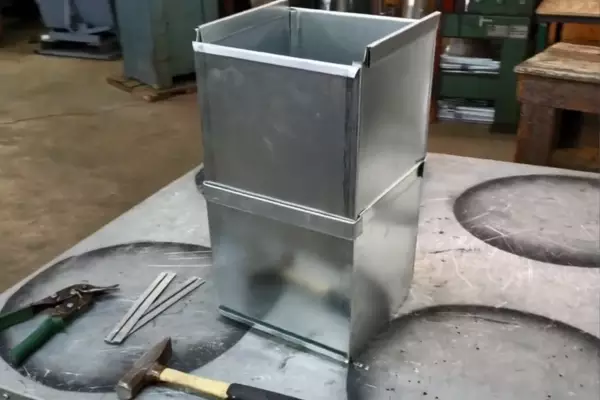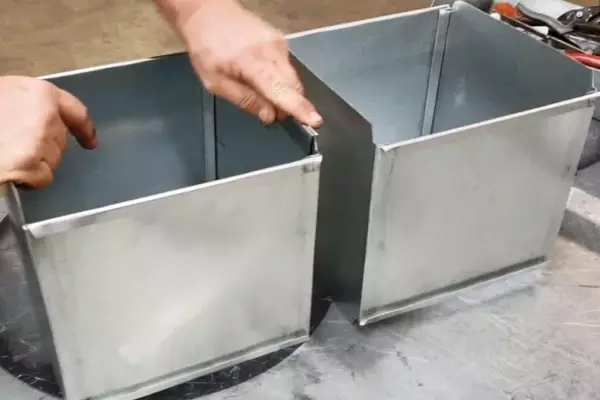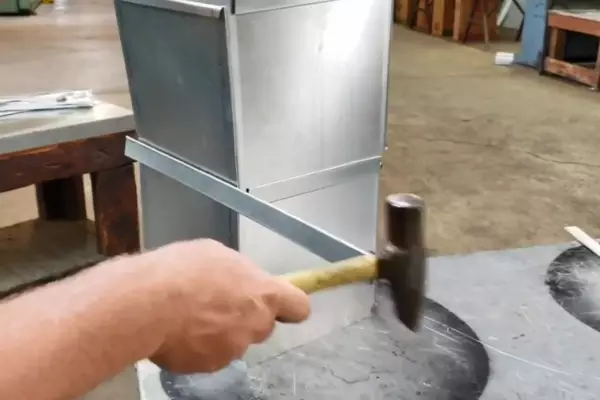Air ducts serve as the backbone of any HVAC system, ensuring efficient air circulation within homes and buildings. However, over time, they can develop various issues, such as leaks or blockages, that hamper their performance and overall effectiveness. Consequently, duct repair becomes a vital aspect of maintaining a comfortable and healthy indoor environment.
Ignoring damaged air ducts can lead to a multitude of problems, including reduced energy efficiency, poor indoor air quality, and even health issues for occupants. That’s why it’s essential to identify and address duct issues promptly, ensuring your HVAC system operates at peak performance.
Dive into this comprehensive guide, where you’ll learn about the common signs of duct damage, effective repair methods, and when to consider a full replacement. We’ll also share valuable maintenance tips to extend the life of your duct system, helping you create a comfortable, energy-efficient, and healthy space for you and your loved ones.
Contents
Understanding Your Home’s Ductwork
Before diving into the intricacies of duct repair and replacement, it’s essential to understand what ductwork is and how it functions within your HVAC system.
Ducts are a network of tubes or channels that transport cooled or heated air from your air conditioning or heating system to the various rooms in your home.
They are typically made of sheet metal, fiberglass, or flexible plastic and can be found in various shapes, such as round, rectangular, or oval.

Signs You May Need Ductwork Repair or Replacement
There are several signs that your ductwork may need attention, including:
- Uneven temperatures: If some rooms feel hotter or colder than others, it could indicate an issue with your ductwork.
- Increased energy bills: A sudden spike in your energy costs may be a sign of inefficient or damaged ducts.
- Excessive dust: If you notice a significant amount of dust in your home, it could be due to leaky or poorly sealed ducts.
- Unusual noises: Rattling, humming, or whistling sounds coming from your ducts may indicate damage or loose connections.
Common Ductwork Issues and Solutions
Some typical problems you might encounter with your home’s ductwork include:
Leaks and gaps
Over time, ducts can develop holes or gaps, leading to air leakage and inefficiency. Solutions include sealing the leaks with mastic or foil-backed tape, or replacing the damaged sections.
Poor insulation
Insufficient insulation can cause heat loss in winter and heat gain in summer, making your HVAC system work harder. Adding insulation to your ducts can improve energy efficiency.
Improperly sized ducts
Ducts that are too small or large for your HVAC system can result in poor airflow and reduced efficiency. A professional can assess your system and recommend appropriate duct sizing.
Pests or mold
Insects, rodents, or mold can infest your ducts, impacting air quality and potentially causing damage. Regular cleaning and maintenance can help prevent these issues.

The Duct Repair Process
Duct repair typically involves the following steps:
Inspection
A professional HVAC technician will thoroughly inspect your ductwork to identify any issues and determine the extent of the damage.
Cleaning
The technician may clean the ducts to remove any debris, dust, or mold that may have accumulated over time.
Sealing leaks and gaps
If leaks or gaps are found, the technician will seal them using mastic or foil-backed tape. They may also use a special sealant called duct sealant to close small holes.
Reinforcing connections
Loose connections between duct sections can be tightened or reinforced using screws, clamps, or additional tape.
Adding insulation
If your ducts lack proper insulation, the technician can add insulation material to help improve energy efficiency and reduce heat loss or gain.
Testing
After the repairs are completed, the technician will test the system to ensure it’s functioning properly and efficiently.
Pros and Cons of Duct Repair
Pros:
- Cost-effective: Repairing your ductwork is generally more affordable than replacing the entire system.
- Less disruptive: Repairing ducts is less invasive and time-consuming than a full replacement.
- Improved efficiency: Properly sealed and insulated ducts can improve your HVAC system’s energy efficiency.
Cons:
- Temporary solution: Depending on the extent of the damage, repairs may only offer a temporary solution, and a full replacement may be necessary in the future.
- Limited improvements: Repairing ducts may not solve all issues, especially if the system has been poorly designed or installed.
The Duct Replacement Process
If your ductwork is beyond repair or reaching the end of its lifespan, you may need to consider a full replacement. The duct replacement process typically involves the following steps:
- Assessment: A professional HVAC technician will assess your existing ductwork and determine whether a full replacement is necessary.
- Design: The technician will design a new duct system that is appropriately sized and configured for your home and HVAC system.
- Removal: The old ductwork will be carefully removed and disposed of.
- Installation: The new ductwork will be installed, ensuring proper connections, sealing, and insulation.
- Testing: After the installation is complete, the technician will test the system to ensure it’s functioning correctly and efficiently.

Pros and Cons of Duct Replacement
Pros:
- Long-term solution: Replacing your ductwork provides a long-lasting solution to any issues you may be experiencing.
- Improved efficiency: A new, properly designed duct system can significantly improve the energy efficiency of your HVAC system.
- Better air quality: Replacing old, damaged ducts can lead to improved indoor air quality.
Cons:
- Higher cost: The cost of replacing your ductwork can be significantly higher than simply repairing it.
- More time-consuming: A full replacement can take longer and be more disruptive to your home than a repair.
Factors to Consider When Choosing Between Repair and Replacement
When deciding whether to repair or replace your ductwork, consider the following factors:
Age of the system: If your ductwork is nearing the end of its lifespan (typically around 15-20 years), replacement might be a better investment.
Extent of damage: If the damage to your ducts is extensive or recurring, it may be more cost-effective to replace the system rather than continually repairing it.
Energy efficiency: If your ducts are poorly insulated or improperly sized, replacing them with a more efficient system can lead to long-term energy savings.
Budget: Consider the costs associated with both repair and replacement, and determine which option is more feasible for your budget.
The Importance of Regular Duct Maintenance
To prolong the life of your ductwork and prevent the need for frequent repairs or replacements, it’s essential to perform regular maintenance. Here are some maintenance tips to help keep your ducts in top shape:
Inspect: Regularly check your ducts for any signs of damage, such as leaks, gaps, or loose connections.
Clean: Have your ducts professionally cleaned every few years to remove dust, debris, and any potential mold or pest infestations.
Change air filters: Replace your HVAC system’s air filters regularly to maintain proper airflow and prevent dust buildup in your ducts.
Seal and insulate: Ensure that your ducts are properly sealed and insulated to prevent air leakage and improve energy efficiency.
Hire a professional: Schedule routine HVAC maintenance with a professional technician who can inspect and maintain your ducts as needed.
FAQs
How do I know if my ductwork needs repair or replacement?
Signs that your ductwork may need attention include uneven temperatures throughout your home, increased energy bills, excessive dust, or unusual noises coming from your ducts. A professional HVAC technician can inspect your ducts and recommend whether repair or replacement is the best solution.
How much does duct repair or replacement cost?
The cost of duct repair or replacement can vary depending on the extent of the damage, the size of your home, and the materials used. On average, duct repair can cost between $300 and $500, while full duct replacement can range from $1,500 to $7,000 or more. Always obtain multiple quotes from reputable HVAC companies to ensure you get the best price and quality of service.
How long does ductwork last?
The lifespan of ductwork can vary depending on the materials used, the quality of installation, and how well it’s maintained. Generally, ducts made of sheet metal or fiberglass can last up to 20 years or more, while flexible plastic ducts may have a shorter lifespan of 10 to 15 years. Regular maintenance and timely repairs can help prolong the life of your ducts.
Final Verdict
The decision to repair or replace your ductwork depends on several factors, including the age of the system, the extent of the damage, and your budget. While repairs can be more affordable and less disruptive, they may only offer a temporary solution in some cases.
On the other hand, duct replacement can be a more significant investment but provides long-lasting benefits in terms of efficiency and air quality.
Consult with a professional HVAC technician to determine the best course of action for your specific situation, and don’t forget to schedule regular maintenance to keep your ducts in optimal condition for years to come.

